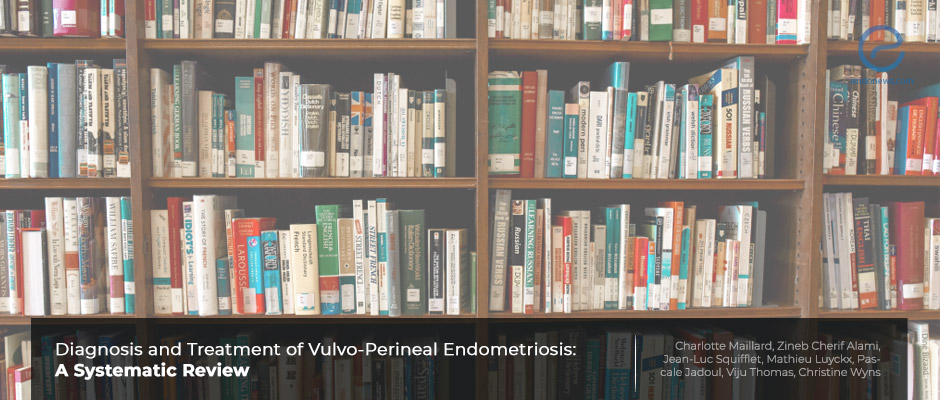Vulvo- Perineal Endometriosis: From diagnosis to treatment
Jun 30, 2021
Is it really rare or just we cannot diagnose it? Vulvo-perineal endometriosis
Key Points
Highlights:
- Physicians should keep "Vulvo-Perineal Endometriosis" in mind, in case of perineal cyclical pain either in the absence or presence of previous perineal damage.
Importance:
- It is necessary to raise the physicians’ awareness about Vulvo-Perineal Endometriosis which is a very rare entity, with almost 300 confirmed cases in the last century.
What's done here:
- Electronic databases and search engines were reviewed by a single author.
- Searched keywords in electronic databases and search engines were “Endometriosis” and “Perineum” or “Vulva” to find all possible articles.
- No language restriction was applied, the number of queries and record numbers for each database or search engine were recorded.
- Exclusion criteria were written as review articles, studies investigating lesions other than Vulva and perineum (abdominal wall, inguinal area, etc.), and malignant transformation of endometriosis.
- Additionally, two reviewers (CM, ZCA) independently scanned the titles and abstracts and reviewed the results of the search output to identify potentially relevant studies.
Key Results:
- Among 457 potentially eligible studies analyzed, 90 articles including 83 case reports and seven retrospective studies (from 14 to 36 patients), were enrolled.
- Totally, 283 patients with a mean age of 32.7 years were counted in, and 95.3% of patients had a history of previous episiotomy, obstetrical lacerations, perineal trauma, or vaginal injury.
- The period between perineal trauma and development of symptoms was at average 2.5 years, the main symptom was vulvar and/or perineal cyclical pain increasing during menstruations.
- In physical examination, vulvo-perineal nodule, mass, or swelling, including one with vulvar ulceration was defined in 97.5% of patients.
- Except for one patient, 282 of 283 patients underwent surgical excision of the perineal mass and 88 patients received hormonal therapy, either pre-or post-operatively for 3–6 months.
Limitations:
- Retrospective nature is the limitation of the study.
- The present review included only seven articles and evaluated mainly case reports which make it difficult to generalize the outcomes of the study.
Lay Summary
Vulvo- Perineal endometriosis is a very rare condition that should be kept in mind to be diagnosed and treated. Due to its very rare occurrence, most of the information in the literature on vulvo-perineal endometriosis is based on case reports and studies with a small number of patients.
Miallard and colleagues reviewed 90 articles including 83 case reports and seven retrospective studies, reporting a total of 283 patients.
Authors concluded that 95.3% of patients with vulvo-perineal endometriosis had a history of previous episiotomy, obstetrical lacerations, perineal trauma or vaginal injury, and duration between perineal trauma and development of symptoms was around 2.5 years.
Vulvo-perineal nodule, mass, or swelling, including one with vulvar ulceration, was defined in 97.5% of patients, and almost all patients (282 of 283 patients) underwent surgical treatment.
In addition, 88 patients received hormonal therapy pre or post-operatively.
The authors suggested a prospective database should be generated to overcome the variabilities on treatment and diagnosis and also to raise awareness on health care providers.
Research Source: https://pubmed.ncbi.nlm.nih.gov/34046423/
vulvoperineal endometriosis

